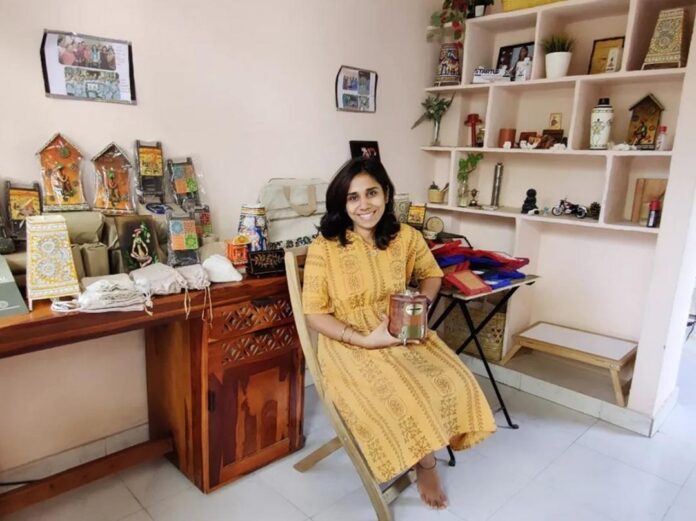Reviving endangered crafts has been at the heart of Gullakaari’s mission since its inception in 2023. Founded by software engineer Sushmita Kaneri, this initiative has breathed new life into India’s dying art forms while creating sustainable livelihoods for artisans. Within just two years, Gullakaari has achieved remarkable success, generating ₹50 lakh in annual revenues and building a network of over 1,000 artisans across nine states.
A Vision To Preserve India’s Cultural Heritage
The journey of Gullakaari began with a clear vision: to revive traditional crafts that were on the verge of extinction. India is home to a rich tapestry of cultural art forms, many of which have faded into obscurity due to modernization and lack of demand. Recognizing the urgent need to preserve this heritage, Kaneri launched Gullakaari as a platform to bring these crafts back into the limelight.
From Rogan painting in Gujarat to Bidriware from Karnataka, Gullakaari has successfully revived 13 endangered crafts so far. The initiative works directly with artisans, ensuring they are fairly compensated and provided with the resources they need to sustain their craft.
Modernizing Traditional Crafts For New Audiences
One of the key factors behind Gullakaari’s success is its ability to blend traditional techniques with modern aesthetics. The products range from home decor and fashion accessories to eco-friendly utility items, all designed to appeal to contemporary consumers.
This innovative approach not only makes these crafts relevant in today’s markets but also helps artisans expand their reach to urban and international audiences. Kaneri’s team has leveraged e-commerce platforms and social media marketing to showcase these products, ensuring maximum visibility for the artisans’ work.
Empowering Artisans Through A Sustainable Network
Gullakaari’s impact extends beyond preserving art forms—it empowers artisans by providing them with stable income and opportunities for growth. Many artisans who once struggled to make ends meet now earn a sustainable livelihood through the initiative.
The organization also places a strong emphasis on eco-friendly practices. All products are made using sustainable materials, aligning with global trends for ethical and environmentally conscious consumption. This focus on sustainability has further boosted Gullakaari’s appeal among urban consumers.
The Economic Impact Of Reviving Endangered Crafts
The economic benefits of reviving endangered crafts are immense. By generating ₹50 lakh in annual revenues, Gullakaari has demonstrated that cultural preservation can be a profitable venture.
Moreover, the initiative has encouraged younger generations to take up traditional crafts, ensuring their continuity. In many communities, the demand for these crafts has revitalized local economies, creating a ripple effect of positive change.
Challenges On The Road To Revival
Overcoming Lack Of Awareness
One of the biggest challenges Kaneri faced was the lack of awareness about endangered crafts among consumers. Many people were unaware of the existence and cultural significance of these art forms. Gullakaari addressed this issue through educational campaigns and workshops aimed at raising awareness.
Accessing Urban And Global Markets
Another major hurdle was bridging the gap between artisans and potential buyers. Reaching urban and international markets required strategic planning and the use of digital platforms. By establishing a strong online presence, Gullakaari successfully connected artisans with buyers from around the world.
Gullakaari’s Growing Network And Future Plans
As Gullakaari continues to grow, its vision remains clear: to expand its network of artisans and revive more endangered crafts. Kaneri plans to introduce additional art forms and collaborate with artisans from across India.
The organization is also exploring the idea of opening physical stores in metropolitan cities, further enhancing accessibility for urban consumers. Educational initiatives, such as workshops and exhibitions, are in the pipeline to foster a deeper appreciation for traditional crafts among the general public.
A Blueprint For Cultural Entrepreneurship
Sushmita Kaneri’s journey with Gullakaari serves as a powerful example of cultural entrepreneurship. Her success highlights the potential of combining social impact with a sustainable business model.
By reviving endangered crafts, Gullakaari has not only preserved India’s cultural heritage but also empowered thousands of artisans. The initiative stands as a testament to the idea that cultural preservation and economic development can go hand in hand.
Reviving endangered crafts is more than just a business goal for Gullakaari—it is a movement to safeguard India’s rich heritage for future generations.


